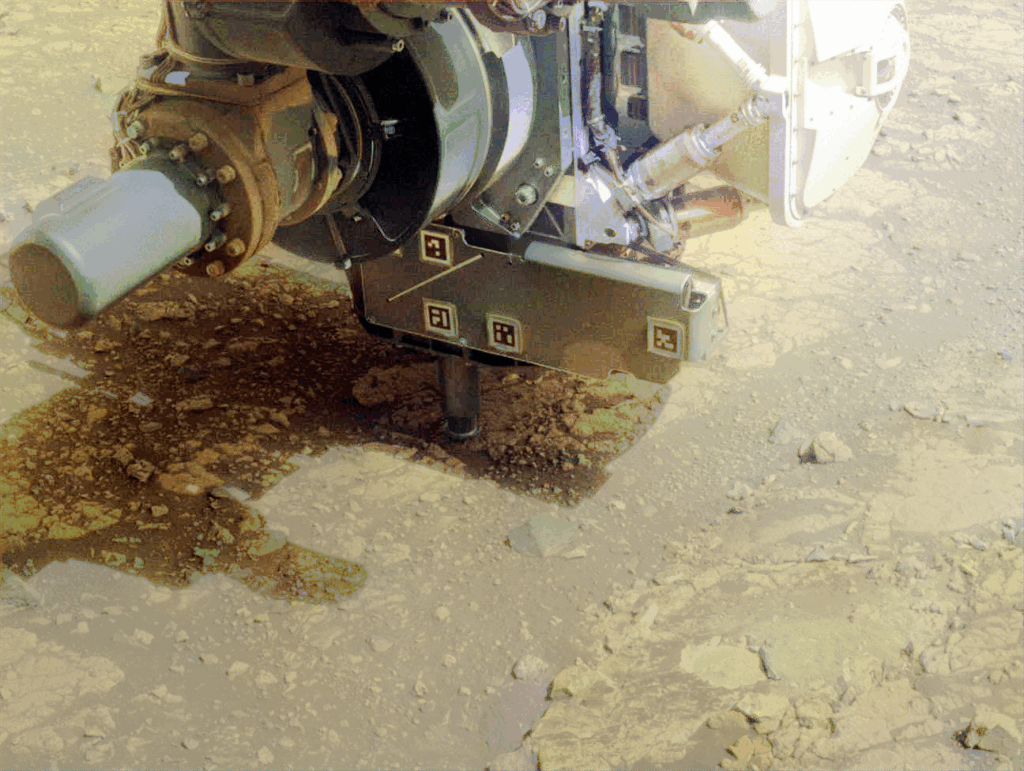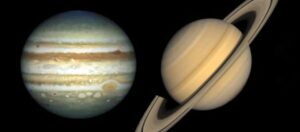
In a groundbreaking mission on June 3, NASA’s Perseverance rover delved into the Martian surface, revealing secrets hidden beneath the dusty exterior. The rover, equipped with advanced scientific instruments, meticulously ground down a section of a rock dubbed “Kenmore,” exposing its pristine interior for analysis. This marks the 30th rock that Perseverance has scrutinized since its arrival on Mars, providing invaluable insights into the planet’s mineralogical and geological history.
Ken Farley, Perseverance’s deputy project scientist from Caltech, described the challenge posed by Kenmore. “Kenmore was a weird, uncooperative rock,” Farley noted. Despite its seemingly suitable appearance for abrasion, the rock vibrated and fragmented during the process. However, the team successfully penetrated below the surface, allowing for a detailed analysis of its composition.
Innovative Techniques in Martian Exploration
The Perseverance rover employs a unique approach to studying Martian rocks. Unlike its predecessors, Spirit and Opportunity, which used a Rock Abrasion Tool (RAT), Perseverance utilizes a sophisticated abrading bit. This tool, combined with the Gaseous Dust Removal Tool (gDRT), clears debris more effectively, avoiding terrestrial contamination. Kyle Kaplan, a robotic engineer at NASA’s Jet Propulsion Laboratory, emphasized the gDRT’s efficiency, having performed 169 puffs of nitrogen to date, with approximately 800 puffs remaining.
After the gDRT clears the surface, the rover’s WATSON imager captures detailed images, while SuperCam analyzes the rock’s composition using laser-induced breakdown spectroscopy. Cathy Quantin-Nataf from the University of Lyon highlighted the discovery of clay minerals in Kenmore, indicating the presence of water in ancient Mars.
Discoveries and Implications
The mission’s findings extend beyond clay minerals. The SHERLOC and PIXL instruments identified feldspar and manganese hydroxide in the rock, the latter being a first for the mission. These discoveries not only enhance our understanding of Mars’ geological history but also inform future missions on potential resources for human exploration.
Farley reflected on the broader implications of these findings. “The data we obtain now will help future missions,” he said. “They’ll have a much better idea whether you can easily drive over it, sample it, or use it as construction material for a habitat.”
Perseverance’s Record-Breaking Journey
In addition to its scientific achievements, Perseverance set a new record on June 19, traveling 1,348 feet in a single autonomous drive. This feat underscores the rover’s capability to navigate Mars’ challenging terrain efficiently, thanks to its AutoNav system. This self-driving technology reduces travel time between scientific sites, maximizing the mission’s productivity.
As Perseverance continues its journey across the Martian landscape, the data collected promises to reshape our understanding of the Red Planet. The rover’s ability to analyze and interpret Mars’ geological history paves the way for future exploration and potential human settlement.
Looking ahead, the mission’s success in analyzing Martian rocks like Kenmore will inform strategies for resource utilization, crucial for sustaining human presence on Mars. As NASA and its partners plan for manned missions, the insights gained from Perseverance will be instrumental in overcoming the challenges of interplanetary exploration.






